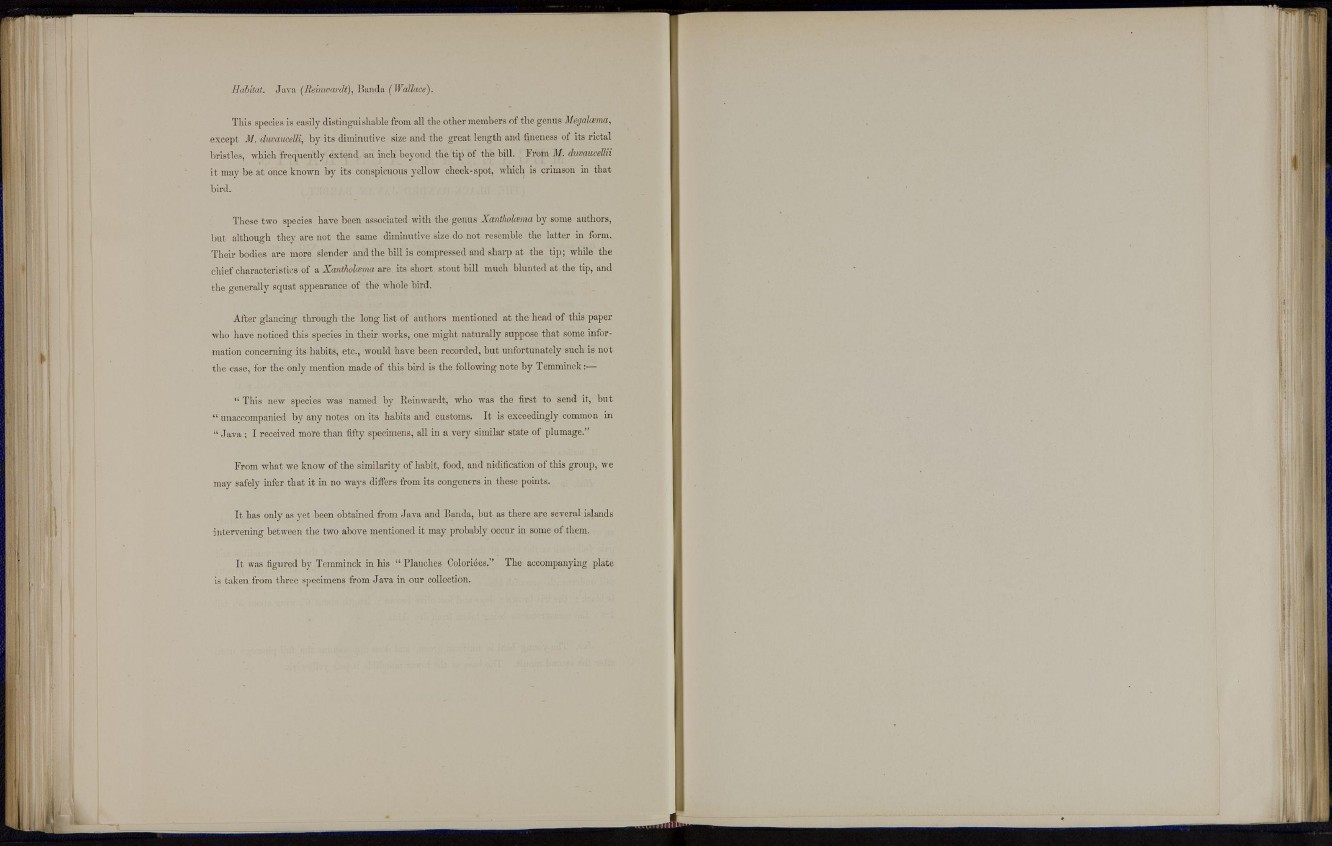
Habitat. Java (Reinwardt), Banda (Wallace).
This species is easily distinguishable from all the other members o f the genus Meijahvma,
except M. duvaucelli, by i ts diminutive size and t h e great length and f i n e n e s s of its rictal
bristles, which frequently extend an inch beyond the t ip of t he bill. From M. duvauceUii
it may be at once known by its conspicuous yellow cheek-spot, which is crimson in that
bird.
These two species have been associated with the genus Xantholanna by some authors,
but although they are not the same diminutive size do not resemble the latter in form.
Their bodies are more slender and the bill is compressed and sharp at the t i p ; while the
chief characteristics of a Xantholama are i ts short stout bill much blunted at the tip, and
the generally squat appearance of the whole bird.
After glancing through the long list of authors mentioned at the head o f this paper
who have noticed this species in their works, one might naturally suppose that some information
concerning its habits, etc., would have been recorded, but unfortunately such is n o t
the case, for t h e only mention made of this bird is the following note by Temminck:—
" This new species was named by Reinwardt, who was the first to send it, but
" unaccompanied by any notes on its habits and customs. It is exceedingly common in
" J a v a ; I received more t h a n fifty specimens, all in a very similar state of plumage."
From what we know of t h e similarity of habit, food, and nidification of this group, we
may safely infer that it in no ways differs from its congeners in these points.
I t has only as yet been obtained from Java and Banda, but as there are several islands
intervening between the two above mentioned it may probably occur in some of them.
It was figured by Temminck in his " Planches Coloriees." The accompanying plate
is taken from three specimens from Java in our collection.